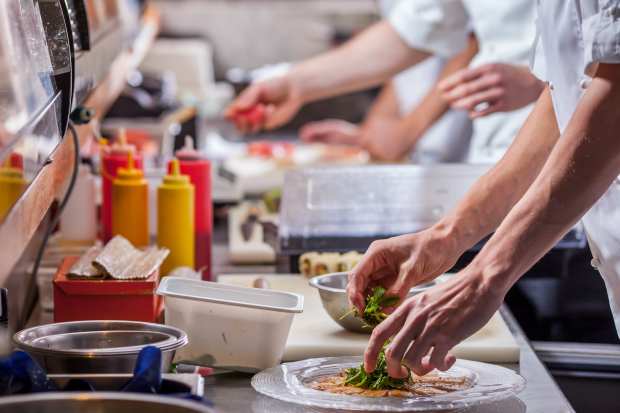What Food Commerce Shifts Do Ghost Kitchens Foreshadow?

Here’s a question about the last meal that was delivered to your office or home: Do you really know where that food came from? Sure, you know the restaurant and the delivery service, but do you really know where that food came from?
That’s the long way of making a point about one of the hottest trends in food commerce now — the rise of ghost, or virtual, kitchens. It’s one of the trends discussed in a recent PYMNTS interview by Sterling Douglass, co-founder and CEO at Chowly, a restaurant software provider. Douglass has a front seat to all the ongoing and massive changes happening in the restaurant industry as operators deploy better technology and consumers demand more digital and mobile options. The discussion served as foreshadowing about the changes to come over the next year or so, as the new decade starts.
The new decade will bring more shift from offline ordering to online ordering, he said. That shift will be powered in large part by the aggressive competition in delivery and the ongoing growth of third-party delivery services. And as the world of quick-service restaurants (QSRs) and even other restaurants gets more mobile, new technologies and ordering methods will come into bigger play. That includes voice ordering, Douglass told PYMNTS. Kiosks, too, are in for a brighter future, thanks in part to rising labor costs.
One could argue that, in fact, there is a bubble in the area of third-party delivery services. But Douglass took a different view. “It’s like a centrifuge that spins faster and faster,” he said about that part of the digital payments and commerce world. “We are starting to see acceleration slow down a little. We are starting to see a little bit of a plateau.”
High Stakes
Even so, the stakes remain significant, as PYMNTS research confirms.
Recent data indicates that consumers increased their spending on online food delivery in 2019 by almost 15 percent year over year. Food delivery will likely become a significant part of many restaurants’ earnings, with a projected compound annual growth rate (CAGR) of 6 percent by 2023. Over 80 percent of restaurant operators agree that the use of technology in a restaurant provides a competitive advantage and nearly four in 10 plan to invest more in expanding their off-premises business in 2019.
Those trends, in turn, are rise to ghost, or virtual kitchens — which Douglass said are probably more common than most consumers realize. Also called cloud kitchens, and sometimes called KaaS (kitchens as a service), the operations have emerged as a new model, driven by the rise of online ordering and delivery services. After all, off-premises spending is anticipated to account for up to 80 percent of the restaurant industry’s growth by 2025, and virtual kitchens might play a role in its progress. The prevalence of third-party apps is pushing more chains and quick-service restaurants (QSRs) to consider ghost restaurants, which only offer delivery services and don’t have dine-in locations.
Uber Eats started testing the virtual restaurant model in 2017 when it saw customers searching for poke bowls on the app and coming up short. Now Douglass, whose company is based in Chicago, can name numerous locations in that city where those virtual kitchens operate. “Most people don’t know they are ordering from a virtual kitchen,” the Chowly CEO said — and that certainly makes sense. Even so, it’s worthwhile to pay attention to the trend, given that it promises to be even more important to restaurants in the coming decade.
Kitchen Challenges
But even as those virtual kitchens become a more important part of the landscape, challenges remain that could hinder growth for some operators. “There is a particular struggle around logistics for some of these groups,” Douglass said. Such a problem can lead to other issues that involved order accuracy and delivery radius and other factors.
As well, not all virtual kitchen operations are staffed in the right way, at least in his telling. The people operating virtual kitchens might have significant expertise in the restaurant world or perhaps the real estate industry. In fact, Travis Kalanick, ousted founder of Uber, recently made his next big investment. His real estate company, City Storage Systems, bought a stake in Rebel Foods Pvt. in India, a cloud kitchen company that has a valuation of around $525 million.
But what virtual kitchens dearly need are employees who can handle the tech. “If you don’t have a really high functioning technology stack for virtual kitchens, it’s really difficult to be successful,” Douglass told PYMNTS.
The coming years will no doubt bring much innovation and disruption to the restaurant world. You can bet that virtual kitchens will be part of the ecosystem.
